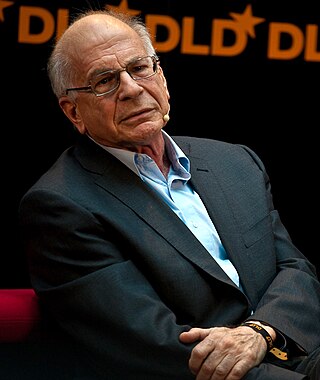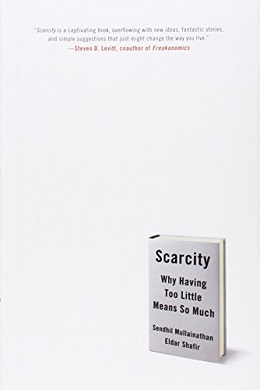The precautionary principle is a broad epistemological, philosophical and legal approach to innovations with potential for causing harm when extensive scientific knowledge on the matter is lacking. It emphasizes caution, pausing and review before leaping into new innovations that may prove disastrous. Critics argue that it is vague, self-cancelling, unscientific and an obstacle to progress.

Creativity is a characteristic of someone or some process that forms something new and valuable. The created item may be intangible or a physical object.
An aptitude is a component of a competence to do a certain kind of work at a certain level. Outstanding aptitude can be considered "talent". Aptitude is inborn potential to perform certain kinds of activities, whether physical or mental, and whether developed or undeveloped. Aptitude is often contrasted with skills and abilities, which are developed through learning. The mass term ability refers to components of competence acquired through a combination of both aptitude and skills.

Cass Robert Sunstein is an American legal scholar known for his work in constitutional law, administrative law, environmental law, and behavioral economics. He is also The New York Times best-selling author of The World According to Star Wars (2016) and Nudge (2008). He was the administrator of the White House Office of Information and Regulatory Affairs in the Obama administration from 2009 to 2012.

The planning fallacy is a phenomenon in which predictions about how much time will be needed to complete a future task display an optimism bias and underestimate the time needed. This phenomenon sometimes occurs regardless of the individual's knowledge that past tasks of a similar nature have taken longer to complete than generally planned. The bias affects predictions only about one's own tasks. On the other hand, when outside observers predict task completion times, they tend to exhibit a pessimistic bias, overestimating the time needed. The planning fallacy involves estimates of task completion times more optimistic than those encountered in similar projects in the past.
In agile principles, timeboxing allocates a maximum unit of time to an activity, called a timebox, within which a planned activity takes place. It is used by agile principles-based project management approaches and for personal time management.

Albert Otto Hirschman was a German economist and the author of several books on political economy and political ideology. His first major contribution was in the area of development economics. Here he emphasized the need for unbalanced growth. He argued that disequilibria should be encouraged to stimulate growth and help mobilize resources, because developing countries are short of decision-making skills. Key to this was encouraging industries with many linkages to other firms.

Exit, Voice, and Loyalty (1970) is a treatise written by Albert O. Hirschman. The work hinges on a conceptual ultimatum that confronts consumers in the face of deteriorating quality of goods and services: either exit or voice. The book has been described as influential. The framework presented in the book has been applied to topics such as protest movements, migration, political parties, and interest groups, as well as to personal relationships.
The overconfidence effect is a well-established bias in which a person's subjective confidence in their judgments is reliably greater than the objective accuracy of those judgments, especially when confidence is relatively high. Overconfidence is one example of a miscalibration of subjective probabilities. Throughout the research literature, overconfidence has been defined in three distinct ways: (1) overestimation of one's actual performance; (2) overplacement of one's performance relative to others; and (3) overprecision in expressing unwarranted certainty in the accuracy of one's beliefs.
In logic and philosophy, a formal fallacy, deductive fallacy, logical fallacy or non sequitur is a pattern of reasoning rendered invalid by a flaw in its logical structure that can neatly be expressed in a standard logic system, for example propositional logic. It is defined as a deductive argument that is invalid. The argument itself could have true premises, but still have a false conclusion. Thus, a formal fallacy is a fallacy where deduction goes wrong, and is no longer a logical process. This may not affect the truth of the conclusion, since validity and truth are separate in formal logic.
The neglect of probability, a type of cognitive bias, is the tendency to disregard probability when making a decision under uncertainty and is one simple way in which people regularly violate the normative rules for decision making. Small risks are typically either neglected entirely or hugely overrated. The continuum between the extremes is ignored. The term probability neglect was coined by Cass Sunstein.

Rationality and Power: Democracy in Practice is a 1998 book by Bent Flyvbjerg, published by the University of Chicago Press. The book focuses on "the application of critical theory to urban and community development". Flyvbjerg here deploys the methodology for doing social science, which he developed in Making Social Science Matter (2001). Upon publication, the International Journal of Urban and Regional Research called Rationality and Power, "a notable addition to the literature," the reviewer adding, "I cannot think of a better account of how power relations are embodied in local governance."

A megaproject is an extremely large-scale investment project. According to the Oxford Handbook of Megaproject Management, "Megaprojects are large-scale, complex ventures that typically cost $1 billion or more, take many years to develop and build, involve multiple public and private stakeholders, are transformational, and impact millions of people". However, $1 billion is not a constraint in defining megaprojects; in some contexts a relative approach is needed, such as in developing countries, where a much smaller project could constitute a megaproject. Therefore, a more general definition is "Megaprojects are temporary endeavours characterised by: large investment commitment, vast complexity, and long-lasting impact on the economy, the environment, and society".
A cost overrun, also known as a cost increase or budget overrun, involves unexpected incurred costs. When these costs are in excess of budgeted amounts due to a value engineering underestimation of the actual cost during budgeting, they are known by these terms.
Bent Flyvbjerg is a Danish economic geographer. He was the First BT Professor and Inaugural Chair of Major Programme Management at Oxford University's Saïd Business School and is the Villum Kann Rasmussen Professor and Chair of Major Program Management at the IT University of Copenhagen. He was previously Professor of Planning at Aalborg University, Denmark and Chair of Infrastructure Policy and Planning at Delft University of Technology, The Netherlands. He is a fellow of St Anne's College, Oxford.
Reference class forecasting or comparison class forecasting is a method of predicting the future by looking at similar past situations and their outcomes. The theories behind reference class forecasting were developed by Daniel Kahneman and Amos Tversky. The theoretical work helped Kahneman win the Nobel Prize in Economics.

Nudge: Improving Decisions about Health, Wealth, and Happiness is a book written by University of Chicago economist and Nobel Laureate Richard H. Thaler and Harvard Law School Professor Cass R. Sunstein, first published in 2008. In 2021, a revised edition was released, subtitled The Final Edition.

Common-interest development (CID) is the fastest growing form of housing in the world today. They include condominiums, community apartments, planned developments, and stock cooperatives. A CID's ownership benefits are having rights to an undivided interest in common areas and amenities that might prove to be too expensive to be solely owned. For example, an owner would like to have a pool but cannot afford one. When buying a condominium with a pool in a CID of one hundred units, an owner would have use of that pool for basically one-hundredth of the cost due to sharing the cost with the other 99 owners. Timeshare, or vacation ownership, is the same concept. Buying a second home for vacation purposes might not be financially possible; buying a week or two can be when sharing the overall costs with other participants.

Scarcity: Why Having Too Little Means So Much is a 2013 book by behavioural economist Sendhil Mullainathan and psychologist Eldar Shafir. The authors discuss the role of scarcity in creating, perpetuating, and alleviating poverty. The book also proposes several ideas for how individuals and groups of people can handle scarcity to achieve success and satisfaction.

Noise: A Flaw in Human Judgment is a nonfiction book by professors Daniel Kahneman, Olivier Sibony and Cass Sunstein. It was first published on May 18, 2021. The book concerns 'noise' in human judgment and decision-making. The authors define noise in human judgment as "undesirable variability in judgments of the same problem" and focus on the statistical properties and psychological perspectives of the issue.










